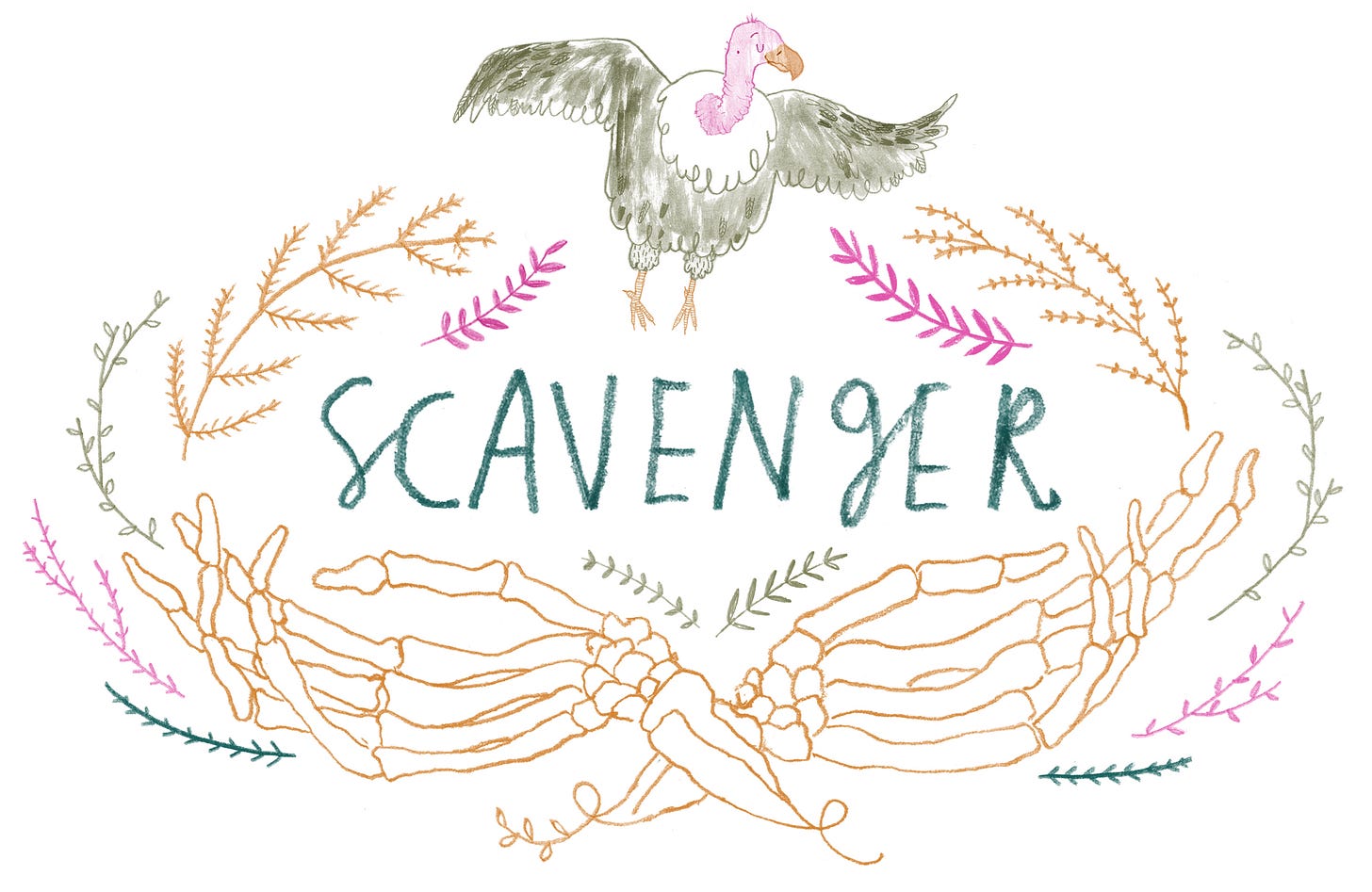
Happy Halloween Eve! I hope that you will see costumed dogs and children tomorrow night, and that your favorite candy is on sale at CVS.
This week, I wrote about a candy that I do not enjoy. This newsletter is … less factual than usual, because the only sources I could find were iffy. But nonetheless, it is my duty to tell you that I think jawbreakers are very, very bad.

Let’s start with the name. “Jawbreaker” entered the English language in 1839. It started strong, as a delightful way to describe a word that’s difficult to pronounce. Soon after, the first version of hard, longlasting sugar candies appeared in the UK, where people dubbed them “gobstoppers.” Gobstoppers. It sounds and feels terrible, the way your mouth has to clomp over the “b” and the double “p.”
Gobstoppers cannibalized the word “jawbreaker” sometime around 1919, thanks to an Italian immigrant named Salvatore Ferrara. After arriving in the US in 1900, Ferrara spent decades years working his way into the confectionary trade. He opened his first pastry shop in 1908, where he sold Italian-style candied almonds that became a major hit.
In 1919, Ferrara opened a new factory called the Ferrara Pan Candy Company. A “non-chocolate candy company,” Ferrara Pan cranked out sugar candies using hot and cold pan processes. These two temperatures refer to techniques for cooking sugar. Chewy candy, like taffy, is made at a low temperature. Jawbreakers and other hard candies are made when sugar is crystallized at dangerously high temperatures. (This Wikihow page shows how you can “make jawbreakers to your heart's content!”)
Ferrara didn’t invent jawbreakers – he sold an updated version of classic gobstoppers or hard penny candies. But whether it was the name or his location in Chicago or another factor entirely, he made jawbreakers popular in America. The name was meant to be taken as a literal warning: The hard candies really could cause dental catastrophes.
Ferrara Pan is apparently still the leading producer of hot pan candy. It is also the source of other monstrosities, like Red Hots, Lemonheads and truly my favorite, candy-coated peanuts called Boston Baked Beans. You all know I love beans, but this is a terrible name for a candy!

Jawbreakers got a major boost in 1964, when Roald Dahl published Charlie and the Chocolate Factory. In the book, Charlie is tasked by villainous Mr. Slugworth with stealing an everlasting gobstopper from Willy Wonka’s candy factory. The fictional jawbreaker is Wonka’s latest innovation, rumored to last forever. The story’s tension hinges on this test, as Charlie worries about his impoverished family and weighs whether to throw his loyalty behind Wonka or Slugworth.
In 1971, Quaker Oats decided to leverage the book’s popularity into a stint in the candy business. The company sponsored a film adaptation starring Gene Wilder (this really happened) as a way to build an audience for a new line of candies sold in theater lobbies. It didn’t work! Quaker sold the failed venture to Nestlé, which still produces lots of Wonka-themed candies today.
The movie generated at least two everlasting gobstopper props. One was eventually auctioned for somewhere in the neighborhood of $25,000. It did not age well:

I will concede that jawbreakers gave us one very good thing: a band name. Jawbreaker is an iconic punk band with a great name that began a well-received reunion tour earlier this year. Is it enough to redeem the candy? Only time will tell.
Something else
If you’re looking for an extremely fast and fun Halloween read, I cannot recommend Ira Levin’s novels enough. Levin wrote Rosemary’s Baby and The Stepford Wives, two books that I’ve definitely mentioned here before.
Levin’s horror infuses banal situations with a particular strangeness. Modern technology, women’s careers, living in a tightly-packed apartments with strangers – all these ordinary things conspire against protagonists who are subjected to forces beyond their control, no matter how smart or brave they are.
Both Rosemary’s Baby and The Stepford Wives are perfect for reading in a single sitting – easy language, unsettling suspense and some inevitably awkward moments that come from a man writing from young mothers’ perspectives.
Happy Halloween!


